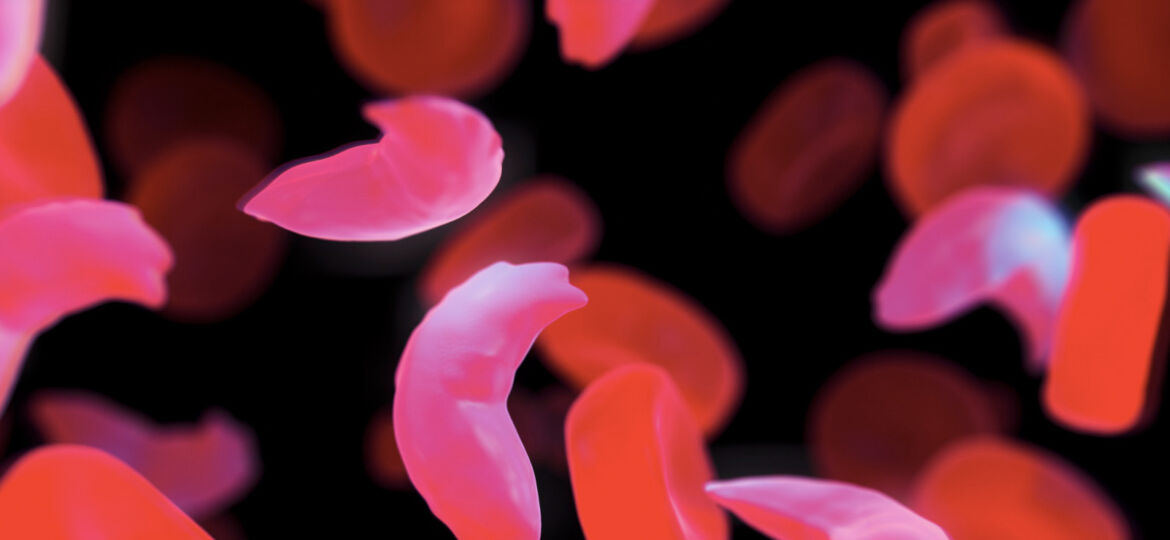
WHY THIS MATTERS IN BRIEF
Sickle cell disease is a painful and debilitating disease that affects millions of people worldwide, but everything seems to indicate researchers have found a cure.
In the first success of its kind, a teenage boy with Sickle Cell disease, an inherited, painful disease, where sickle shaped blood cells get stuck and cause clogs and swelling in important veins and arteries, and that affects millions worldwide, seems to have been cured using gene therapy developed by a team in France.
The idea of gene therapy – using strands of DNA to compensate for a person’s malfunctioning genes – is almost three decades old. However, the approach has so far mostly been used to treat very rare diseases. In contrast, sickle cell affects 100,000 people in the US alone, and if the treatment proves successful in larger trials, it could bring gene therapy into widespread use.
“It could be a game changer,” says Deborah Gill at the University of Oxford, “the fact the team has a patient with real clinical benefit, and biological markers to prove it, is a very big deal.”
People with sickle cell disease make abnormal versions of haemoglobin, the blood protein that carries oxygen around the body. This can be caused by mutations in the gene that makes a subunit of haemoglobin, called beta-globin. The mutations cause haemoglobin to clump together, distorting red blood cells into a sickle-shape that can get stuck in blood vessels around the body. People with the disorder are given blood transfusions to clear these painful blockages and prevent new ones. Bone marrow transplants can treat the disease, but matching donors can only be found for around 10 per cent of people with the condition.
Now a team in France seems to have developed a treatment that would work for everyone with the disorder. First, the team took bone marrow stem cells from the boy when he was 13, and gave them extra, mutated versions of the gene that codes for beta-globin. These were designed to make beta-globin that would interfere with the boy’s faulty proteins, stopping them from clumping together.
The researchers then put these stem cells back into the boy’s body. After around three months, he began producing large quantities of haemoglobin that behaves normally and the teams research was published in the journal New England Journal of Medicine, DOI: 10.1056/NEJMoa1609677.
“The patient is now 15 years old and free of all previous medication,” says Marina Cavazzana at the Necker Children’s Hospital in Paris, who led the team, “he has been free of pain from blood vessel blockages, and has given up taking opioid painkillers.”
Cavazzana is confident these benefits will last.
“All the tests we performed on his blood show that he’s been cured, but more certainty can only come from long-term follow-up,” she says.
“We are all very excited by the work, and this success provides support for this and other genetic strategies targeting this horrible disease,” said John Tisdale at the US National Heart, Lung, and Blood Institute in Maryland.
David Williams, at Boston Children’s Hospital in Massachusetts, who recently used gene therapy to cure deafness in mice, suggests that the boy may still occasionally experience blockages, because his own original genes are still able to produce faulty haemoglobin.
“It’s important to see what happens over time, and how many other patients see similar benefits,” he said.
However, should the gene therapy prove to be effective in larger trials, its expense may limit its use to richer nations, and then there’s the question of whether it would be available on insurance – one recent gene therapy treatment, for example, that was run by Pfizer cost over $625,000, well out of the reach of the average person.
“We should be realistic in remembering that there are hundreds of thousands of sickle cell patients in less developed countries, and that the therapy is not easily exportable or adaptable to countries with less well-developed health systems,” says Stuart Orkin at Harvard Medical School.
So it’s beginning to look like we have the technology and the treatment, but as is always the case – do we have the cash?

















[…] A cure for millions as gene therapy cures patient with Sickle Cell disease […]